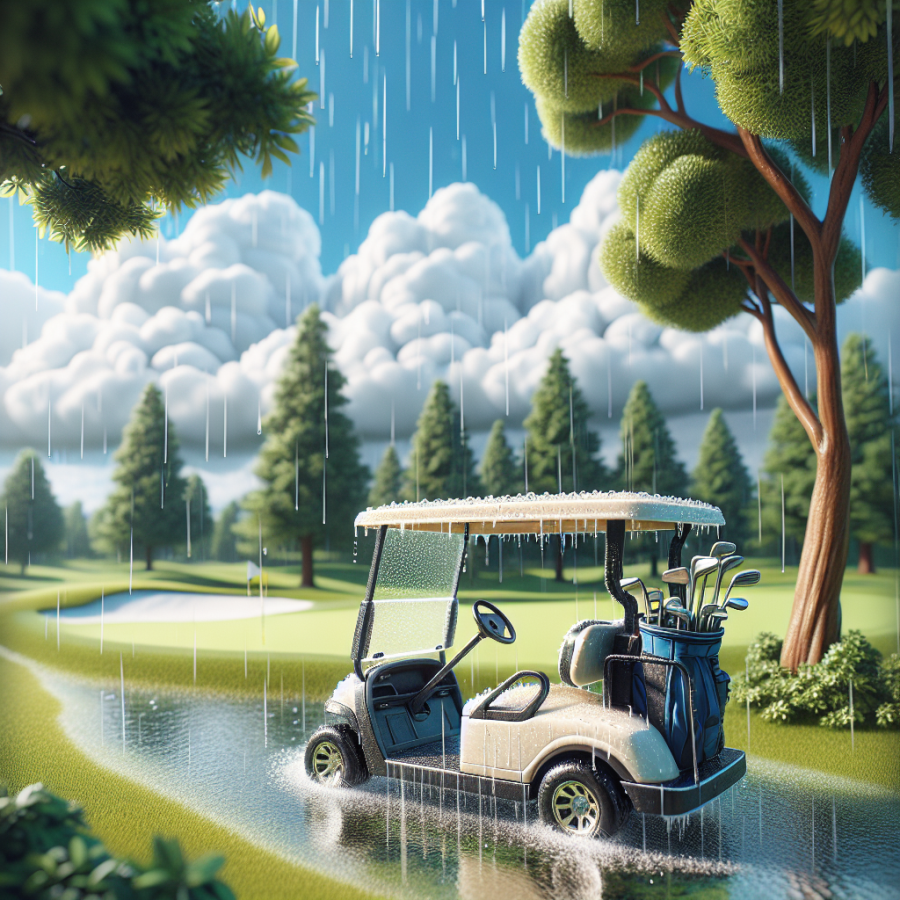Mitigating the Effects of Damp Weather on Golf Cart Durability and Functionality
The adverse effects of damp weather on golf carts can be significantly mitigated by taking proper care of your vehicle and making use of effective preventive measures. As part of this, there are several strategies you can deploy to help preserve the durability and functionality of your golf cart in wet conditions.
First of all, investing in a good quality protective cover for your golf cart is an effective preventive measure. These covers can shield your vehicle from rain, mist, and even morning dew thereby reducing the amount of moisture that your cart is exposed to. Some covers even provide UV protection which can be beneficial in protecting the paintwork from fading and the seats from cracking due to sun damage.
Another practical step is to make sure that the golf cart is always parked on a firm, dry surface whenever possible. This is because parking the cart on wet grass or in puddles can make it prone to rust and other water-related damage, especially if it is left in such conditions for long periods of time.
Regular maintenance is also critical. The golf cart should be inspected regularly and any rust formation should be immediately treated before it can spread and cause significant damage. A part of the maintenance routine should be to wash and dry the golf cart thoroughly after each use especially during wet weather. This can remove any dirt, grime or moisture that may have accumulated and may cause corrosion over time.
One thing to note is that the damage caused by wet weather doesn't just affect the exterior of your golf cart but can also impact the electrical system. It's therefore paramount to ensure that the electrical components of your cart such as the battery, wiring, and lights, are properly protected from water damage. Using dielectric grease is one way to prevent moisture from entering electrical connections and causing corrosion. It also improves electrical conductivity and can extend the lifespan of your golf cart's electrical parts.
The type of tires on your golf cart can also have an impact on its functionality in wet conditions. Consider investing in tires that are designed for wet terrain, as they can provide better traction and prevent the cart from skidding in damp conditions.
Finally, if your area is known for its damp weather, you might want to consider investing in a golf cart that has been specifically manufactured for such conditions. These vehicles often come with additional protective and performance-enhancing features such as rust-proof bodies, waterproof electrical systems and high-traction tires, which further help to combat the negative impacts of wet weather.
Read also:
The Rapid Rise of Pickleball: America's Newest Sports Craze
How Wet Conditions Affect the Performance of Golf Carts
Golf carts, like any automobile, are designed to provide reliable service under a wide range of conditions. However, wet conditions, including rain and humidity, can have profound effects on the performance and longevity of a golf cart. This is particularly true when certain components of the cart aren't properly cared for or adequately prepared.
One area of impact is the golf cart’s electrical system, especially for electric carts. Water and electronics typically aren't compatible, and the cart’s battery and motor are no exceptions. Rain can increase the risk of short circuits which could lead to an unexpected failure of the cart on course. Moreover, repeated exposure to damp conditions can cause speed controllers and other electrical components to degrade over time, and this can impair performance, leading to jerky movement, power loss, or complete breakdown.
In addition, drive belts and brakes in both gas and electric carts can be adversely affected by wet conditions. When drive belts become saturated, they often lose traction and can slip. This can lead to a power loss, poor acceleration, or even an inability for the cart to move. Wet brakes can experience reduced stopping power which might result in longer stopping distances.
Moreover, wet conditions can also put you at risk of rust and corrosion. If your golf cart is frequently exposed to rain, or it isn't dried out properly after being wet, it could result in rust on your cart’s metallic frame. Not only does this affect the aesthetics, but it could also lead to long term structural damage.
Rubber elements on the cart, such as tubes and tyres, can deteriorate faster as well due to increased friction from wet surfaces. This can reduce the lifespan of these elements which, in turn, impacts the overall longevity of the vehicle.
Furthermore, if you have a gas-powered cart, moisture can lead to condensed water in the fuel tank. This can dilute the fuel and significantly decrease the performance of your cart, causing issues like rough idling, reduced power and the engine failing to start.
In addition to various technical issues, driving carts on soft and water-logged turf can reduce maneuverability. The water can make the ground slick, causing carts to lose traction and spin out. Wet turf also tends to be softer, which increases the rolling resistance and this slows down your cart.
Despite these challenges, proper maintenance can slow down or even prevent these wet weather-related problems.




